Lemon Pound Cake
This post may contain affiliate links. Read my full disclosure policy.
This lemon pound cake is the ultimate dessert for lemon lovers.
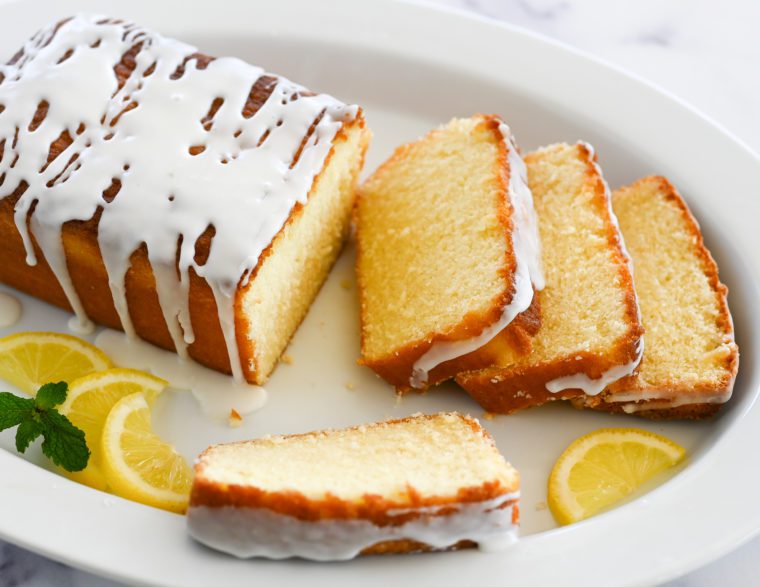
Calling all lemon lovers! This lemon pound cake is a dessert made just for you. The recipe incorporates both lemon zest and lemon juice into the cake batter, infusing the cake with a lovely lemon flavor. But the real magic happens after baking — the cake is generously doused with lemon syrup and then drizzled with a tart lemon glaze, delivering an intense burst of lemon flavor with every bite. The recipe yields two ultra-moist loaves that stay fresh for days on the countertop or can be frozen for later. If you’d like to switch things up, try my popular lemon poppyseed cake and lemon blueberry pound cake variations. A big thank you and shoutout to Karen Tannenbaum, one of my longtime readers, for inspiring this wonderful recipe!
What You’ll Need To Make Lemon Pound Cake
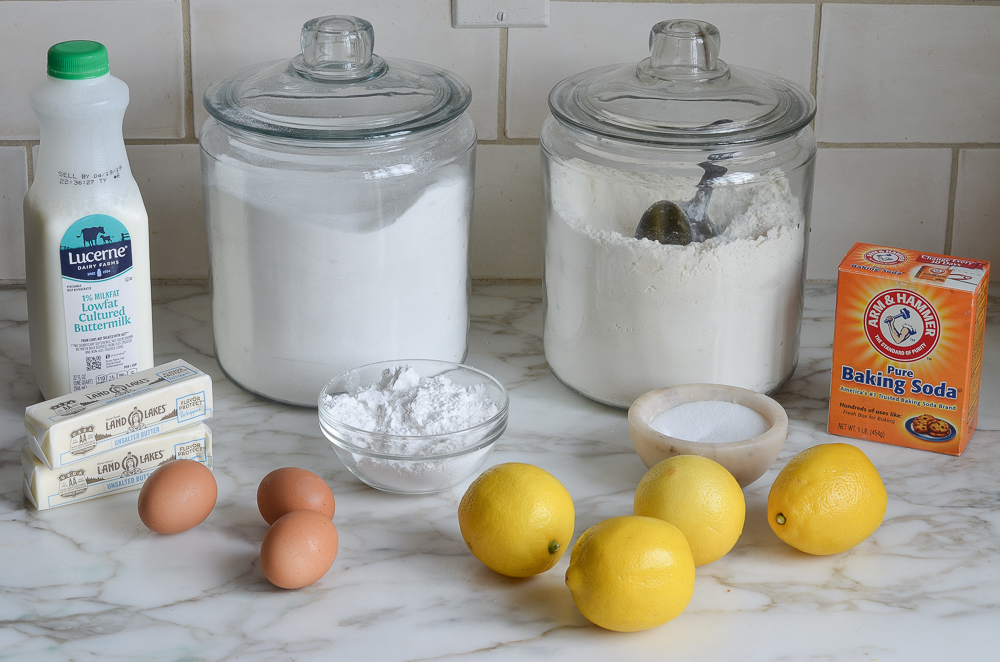
STEP-BY-STEP INSTRUCTIONS
Start by zesting and juicing your lemons. And be sure you zest the lemons first, otherwise, it will be impossible once they are juiced. The best tool for zesting is a rasp grater but any fine grater will do.
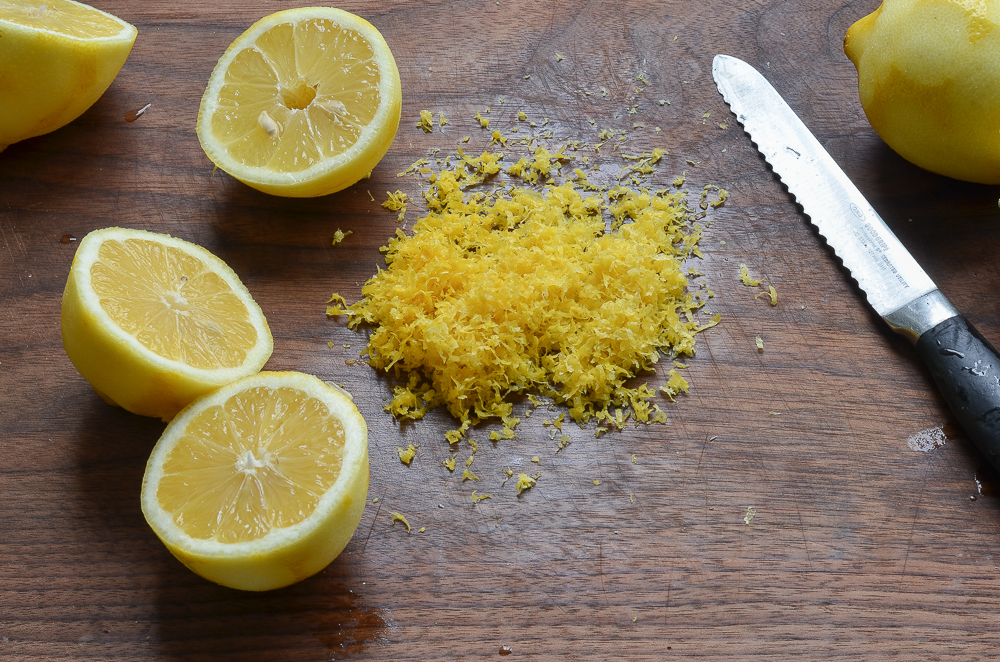 Combine the flour, salt, and baking soda in a mixing bowl. I always add dry ingredients in little piles so I don’t forget what I’ve already added.
Combine the flour, salt, and baking soda in a mixing bowl. I always add dry ingredients in little piles so I don’t forget what I’ve already added.
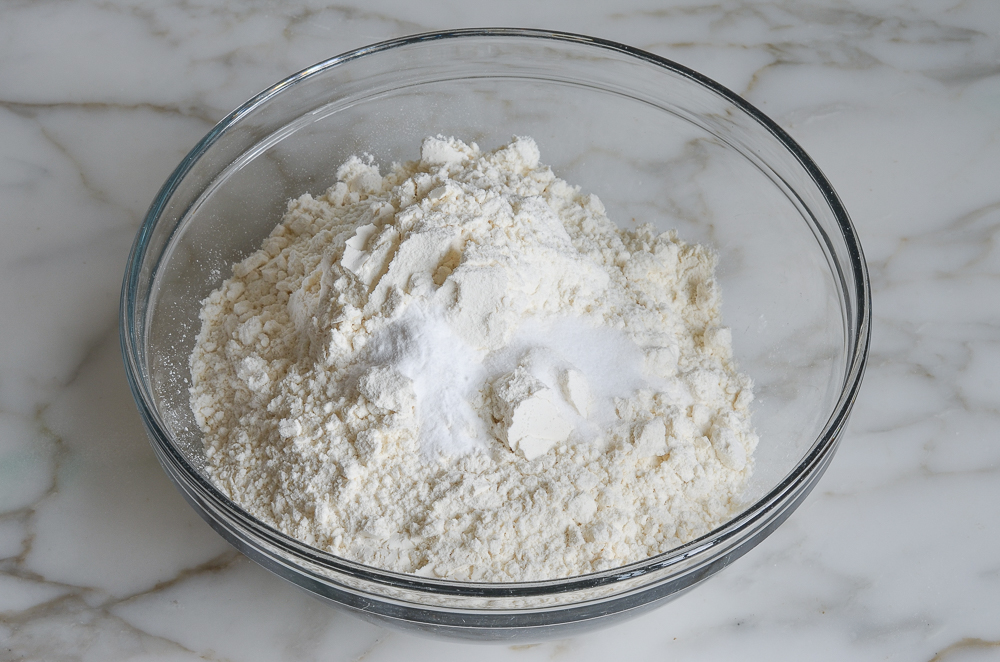 Whisk and set aside.
Whisk and set aside.
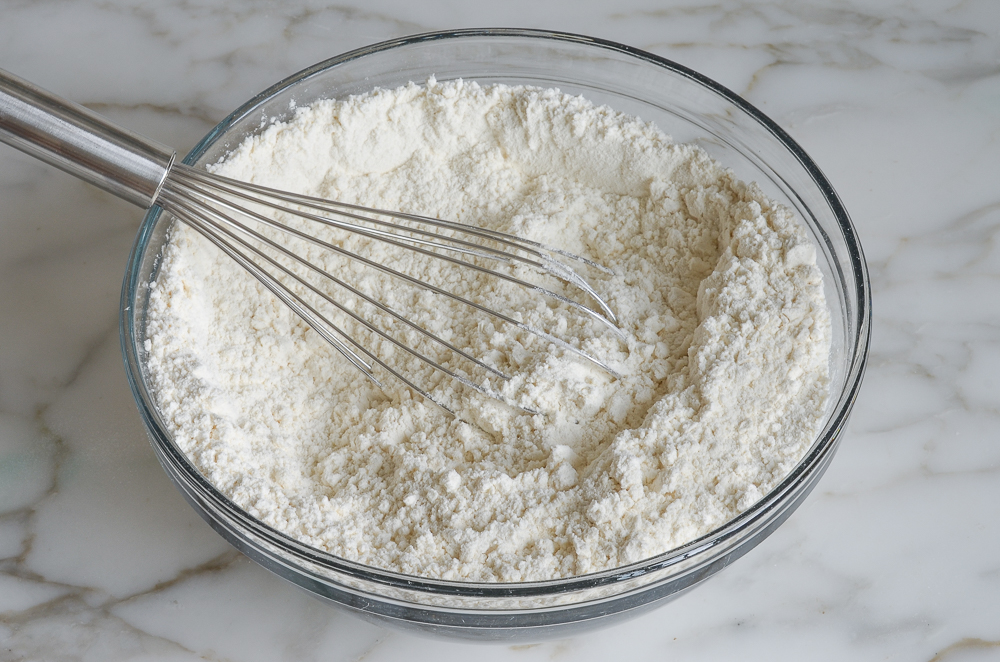
In another bowl, whisk together the buttermilk, lemon zest, and lemon juice. Set aside.
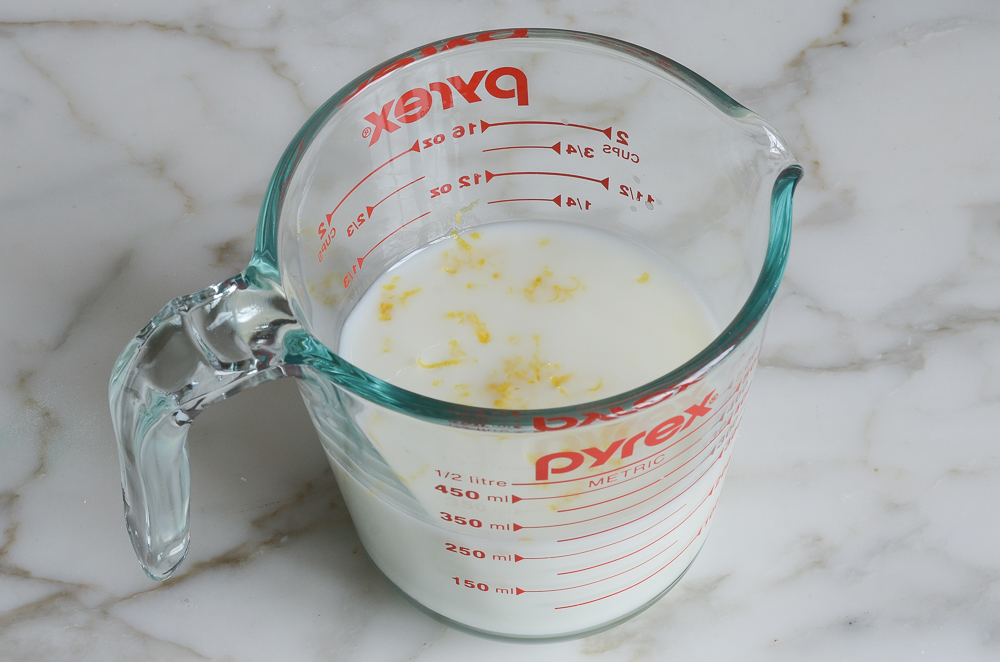
In the bowl of an electric mixer fitted with the paddle attachment (or beaters), cream the butter and sugar on medium speed until light and fluffy, 3 to 4 minutes.
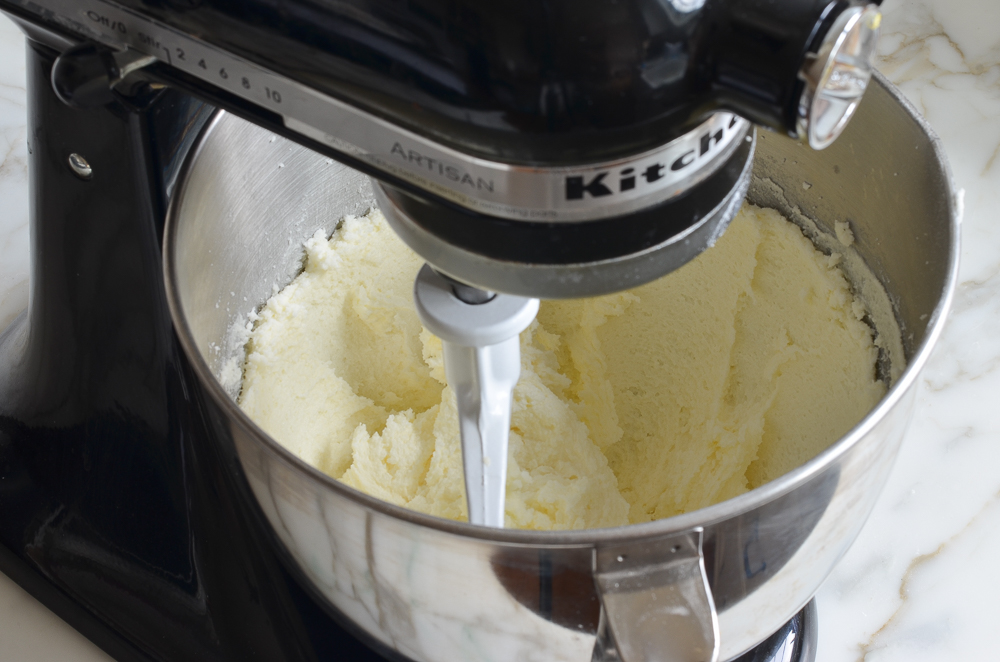
Scrape down the sides of the bowl, then beat in the eggs one at a time, beating well after each addition. Scrape down the sides of the bowl again.
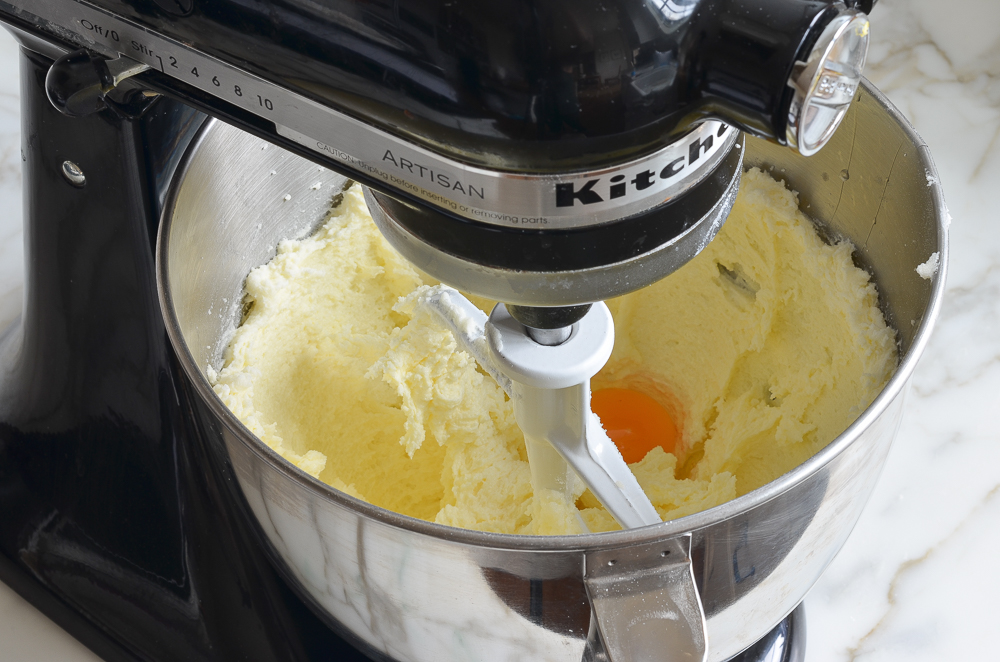
With the mixer on low speed, beat in one-quarter of the flour mixture, then one-third of the buttermilk mixture. Beat in another quarter of the flour, then another third of the buttermilk mixture. Repeat with another quarter of the flour and the remaining buttermilk mixture. Finally, beat in the remaining flour mixture.
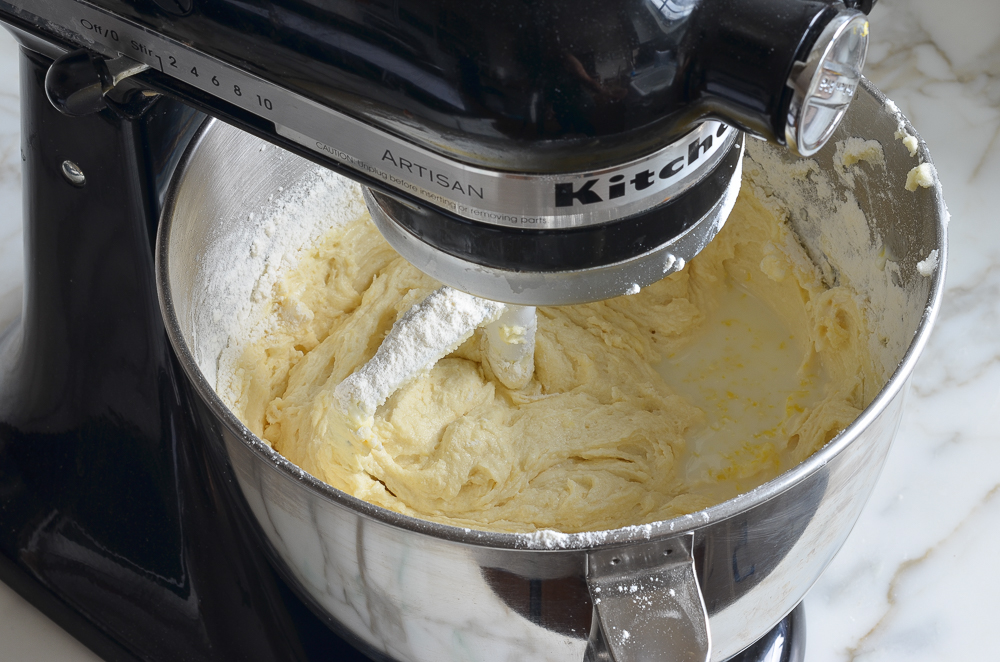
Scrape down the sides of the bowl, and give a quick mix to make sure all of the ingredients are well-incorporated.
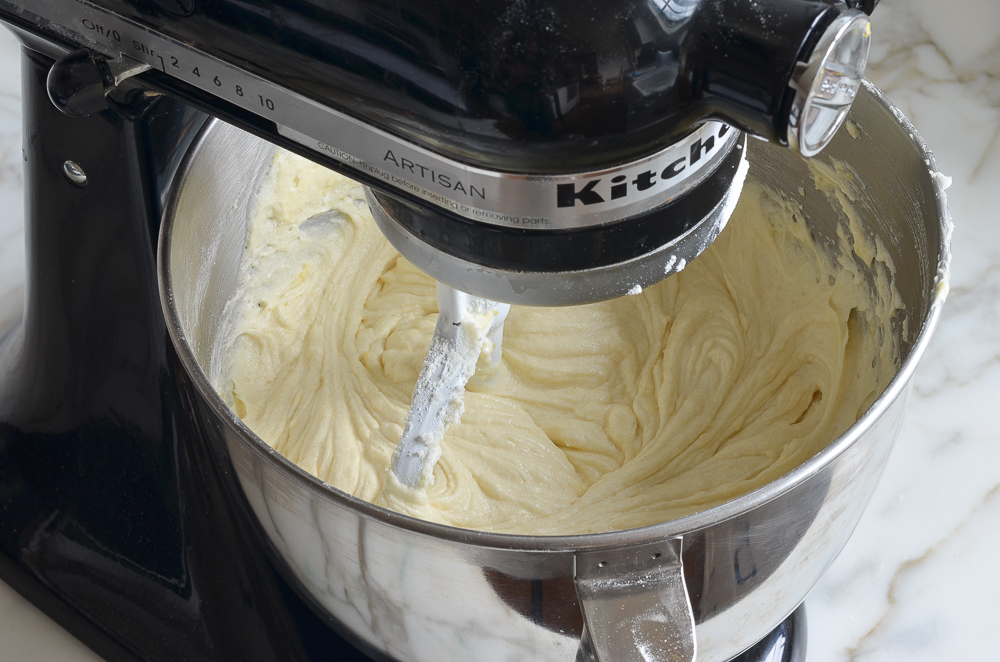
Transfer the cake batter to the prepared pans and smooth with a rubber spatula.
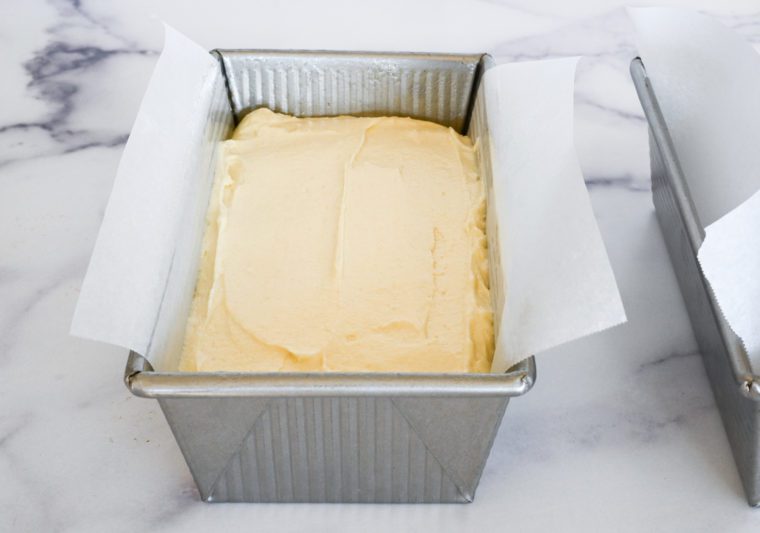
Bake for 55 to 65 minutes, or until the top is golden and a tester comes out clean.
Set the cakes on a cooling rack, and cool in the pans for 10 minutes.
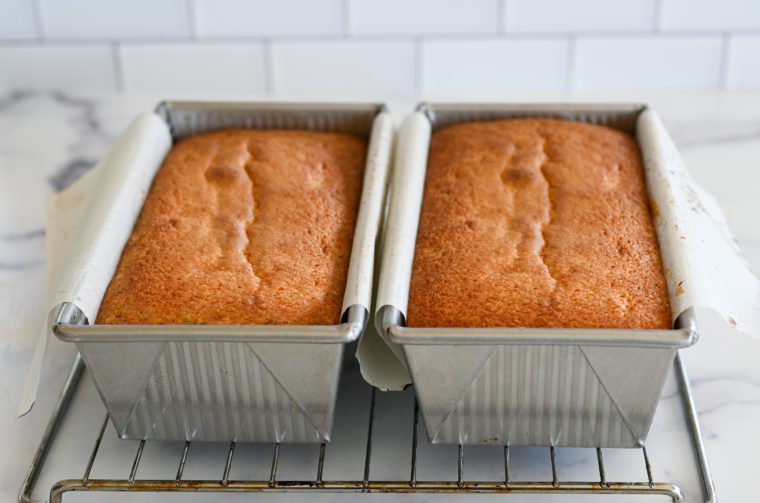
Carefully run a knife along the unlined sides of the pans to loosen the cake from the pan. Using the parchment slings, lift the cakes out of the pans and place onto the rack, leaving the parchment paper in place under the cakes. Let cool for about 1 hour.
When the cakes are almost cool, make the syrup. Combine the water and sugar in a saucepan and bring to a boil. Remove from the heat and stir in the lemon juice.
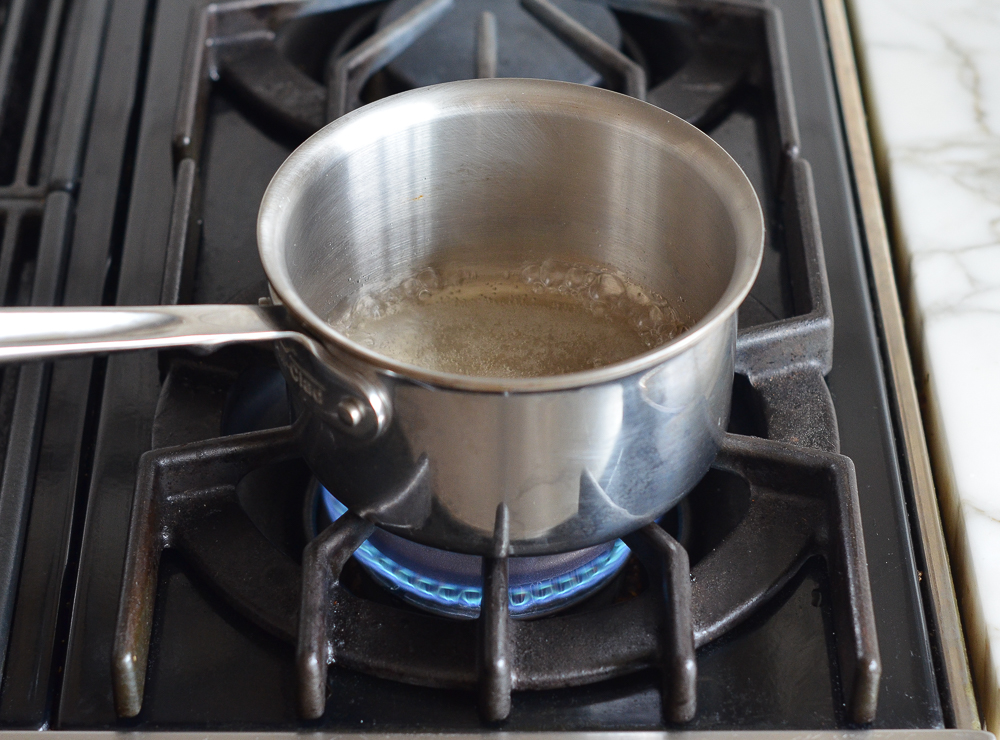
To make the glaze: in a medium bowl, whisk together the confectioners’ sugar and lemon juice. Add more confectioners’ sugar or lemon juice as necessary to make a thick but pourable glaze (it should be a little thicker than you’d think, about the consistency of molasses or honey).
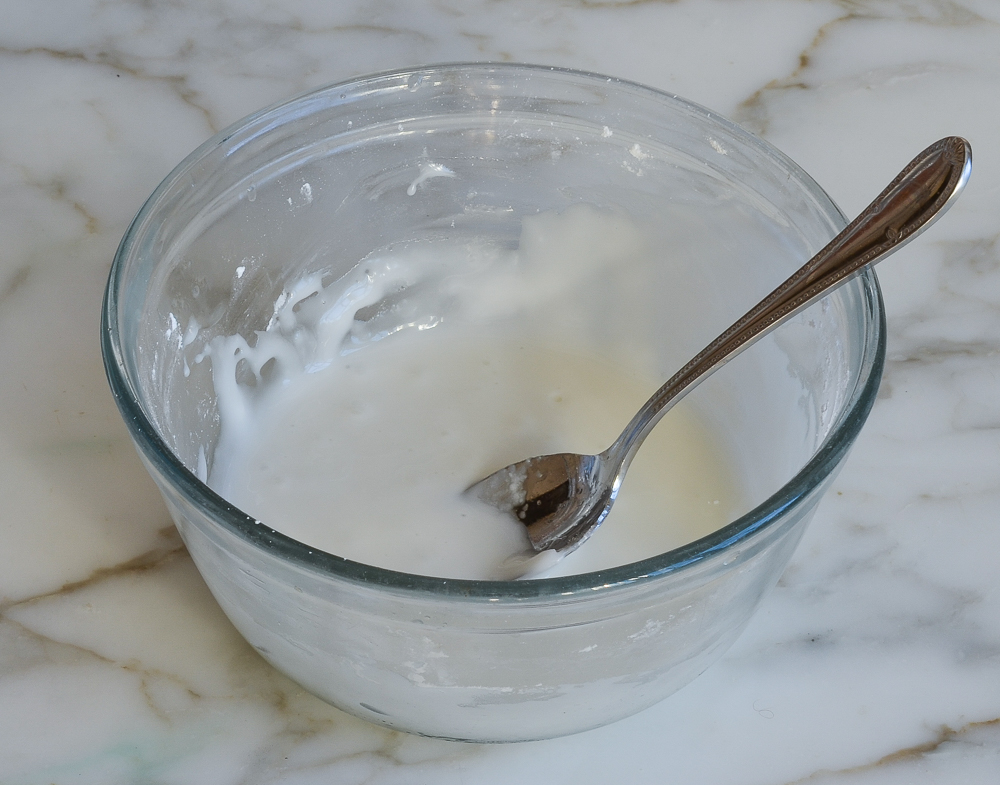
When the cakes are cool, carefully transfer them to serving platters. Gradually brush the warm syrup all over the cakes, including the sides, letting it soak in as you go.
Finally, spoon the glaze over the top of the cake, letting it drip down the sides.
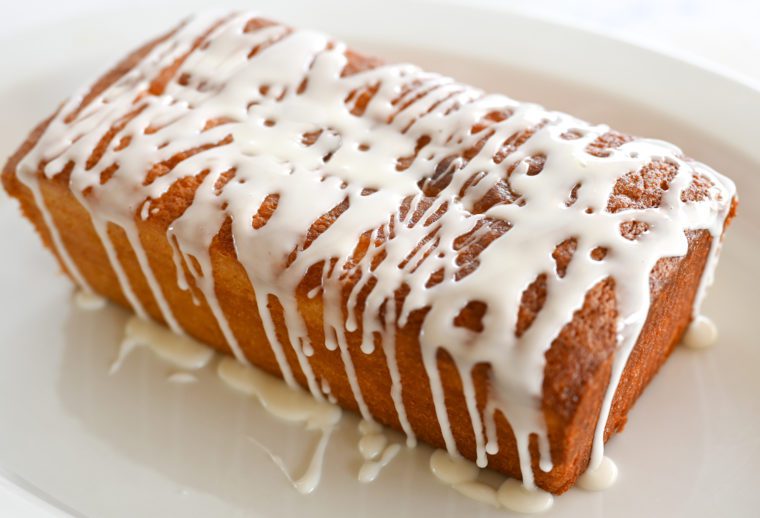
Let the cakes sit for about one hour to allow the glaze to set before serving.
How To Freeze Lemon Pound Cake
The cakes can be frozen without the glaze for up to 3 months. After they are completely cooled, double-wrap them securely with aluminum foil or plastic freezer wrap, or place them in a heavy-duty freezer bag. Thaw overnight on the countertop before serving. (Add the syrup before the cake is frozen and add the glaze after the cake is thawed.)
Note: This recipe was updated in 2022; to see the original version, click here.

You May Also Like
- Warm Lemon Pudding Cakes
- Lemon Poppy Seed Muffins
- Lemon Bars
- Cake Pans to Cookie Sheets: 16 Essential Baking Pans
Lemon Pound Cake
This lemon pound cake is the ultimate dessert for lemon lovers.
Ingredients
For the Cake
- 3 cups all-purpose flour, spooned into measuring cup and leveled-off with a knife
- ½ teaspoon baking soda
- ½ teaspoon salt
- 1 cup buttermilk (low-fat is fine) (see note)
- 2 tablespoons (packed) grated lemon zest (see note)
- 2 tablespoons fresh lemon juice
- 2 sticks (1 cup) unsalted butter, softened
- 2¼ cups granulated sugar
- 3 large eggs
For the Syrup
- 2 tablespoons water
- 2 tablespoons granulated sugar
- 2 teaspoons fresh lemon juice
For the Glaze
- 1 cup confectioners' sugar
- 2 tablespoons fresh lemon juice
Instructions
- Preheat the oven to 350°F and set an oven rack in the middle position. Spray two 8½ x 4½-inch loaf pans with nonstick cooking spray. Line the long sides of the pans with parchment paper “slings” and spray lightly with nonstick cooking spray again.
- In a medium bowl, whisk together the flour, baking soda and salt. Set aside.
- In another bowl, whisk together the buttermilk, lemon zest and lemon juice. Set aside.
- In the bowl of an electric mixer fitted with the paddle attachment (or beaters), cream the butter and sugar on medium speed until light and fluffy, 3 to 4 minutes. Scrape down the sides of the bowl, then beat in the eggs one at a time, beating well after each addition. Scrape down the sides of the bowl again.
- With the mixer on low speed, beat in one-quarter of the flour mixture, then one-third of the buttermilk mixture. Beat in another quarter of the flour, then another third of the buttermilk mixture. Repeat with another quarter of the flour and the remaining buttermilk mixture. Finally, beat in the remaining flour mixture. Scrape down the sides of the bowl, and give a quick mix to make sure all of the ingredients are well-incorporated.
- Divide the thick batter into the prepared pans and smooth with a rubber spatula. Bake for 55 to 65 minutes, or until the top is golden and a tester comes out clean.
- Set the cakes on a cooling rack, and cool in the pans for 10 minutes. Carefully run a knife along the unlined sides of the pans to loosen the cake from the pan. Using the parchment slings, lift the cakes out of the pans and place onto the rack, leaving the parchment paper in place under the cakes. Let cool for about 1 hour.
- When the cakes are almost cool, make the syrup. Combine the water and sugar in a saucepan and bring to a boil. Remove from the heat and stir in the lemon juice.
- When the cakes are cool, carefully transfer them to serving platters.
- Gradually brush the warm syrup all over the cakes, including the sides, letting it soak in as you go.
- To make the glaze: in a medium bowl, whisk together the confectioners' sugar and lemon juice. Add more confectioners' sugar or lemon juice as necessary to make a thick but pourable glaze (it should be a little thicker than you'd think, about the consistency of molasses or honey). Spoon the glaze over the top of the cake, letting it drip down the sides. Let the cakes sit for about one hour to allow the glaze to set before serving.
- Note: If you’d like to make your own buttermilk, check out the easy method here.
- Note: You'll need 4 to 5 large lemons for the entire recipe.
- Make-Ahead/Freezer-Friendly Instructions: The cakes can be made up to 1 day ahead of time and stored in a cake dome or airtight container at room temperature. They can also be frozen (without the final glaze) for up to 3 months. After they are completely cooled, double-wrap securely with aluminum foil or plastic freezer wrap, or place them in a heavy-duty freezer bag. Thaw overnight on the countertop before serving. (Add the syrup before the cake is frozen and add the glaze after the cake is thawed.)
Nutrition Information
Powered by ![]()
- Per serving (16 servings)
- Serving size: 1 slice
- Calories: 313
- Fat: 7g
- Saturated fat: 4g
- Carbohydrates: 59g
- Sugar: 40g
- Fiber: 1g
- Protein: 4g
- Sodium: 143mg
- Cholesterol: 51mg
This website is written and produced for informational purposes only. I am not a certified nutritionist and the nutritional data on this site has not been evaluated or approved by a nutritionist or the Food and Drug Administration. Nutritional information is offered as a courtesy and should not be construed as a guarantee. The data is calculated through an online nutritional calculator, Edamam.com. Although I do my best to provide accurate nutritional information, these figures should be considered estimates only. Varying factors such as product types or brands purchased, natural fluctuations in fresh produce, and the way ingredients are processed change the effective nutritional information in any given recipe. Furthermore, different online calculators provide different results depending on their own nutrition fact sources and algorithms. To obtain the most accurate nutritional information in a given recipe, you should calculate the nutritional information with the actual ingredients used in your recipe, using your preferred nutrition calculator.

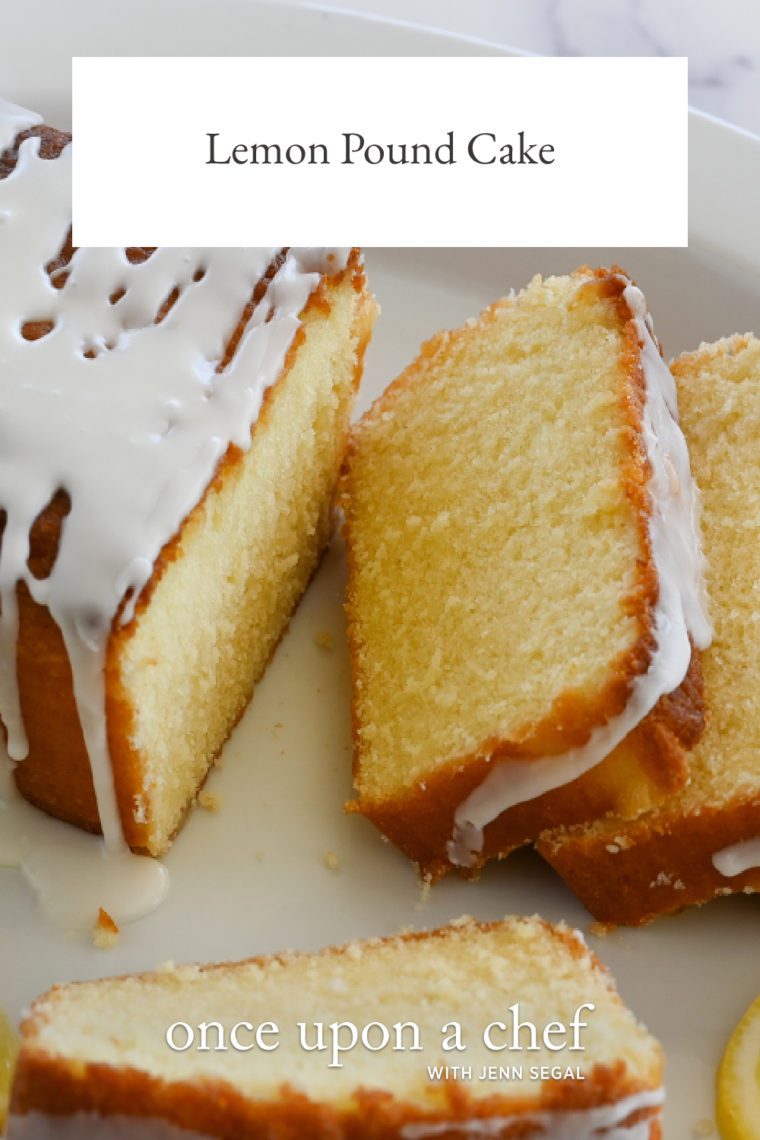
This cake sucked. It wasn’t a pound cake – it was like a normal cake. Not dense at all and the top completely stuck to the pan because of the sugar
Thanks Jenn! My husband and I love this cake!
This is the second time I made this recipe and I love it! The first time I made this recipe I bought a brand new non stick Bundt pan just to make sure that the sugar didn’t make the cake stick to the pan & it didn’t. This time I used two glass loaf pans but was afraid that the cake would stick since this was not a nonstick pan. Still determined to add the sugar to the pan, I decided to use parchment paper that I buttered & sugared and then poured the batter in and they come out perfect! P.S. I also buttered the glass loaf pan before I layered the parchment paper in.
Loved this cake delicious.
I’m a very experienced baker but have never tried the sugar instead of flour for the bundt pan.
Worked perfectly.
My only problem was that I live in Colorado at high altitude, and the mid section of the cake fell.
I’ll definitely try again, after giving some thought to slightly change amount of liquids.
My one criticism is the way the recipe was shown.
If you show the pics it would be much better to show ingredient amounts this them.
LOVE THIS RECIPE! The cake was absolutely delicious, light, and perfectly lemony. I have made it twice and intend to make it again!
Coud I use two 9×5 loaf pans for this recipe?
This is really perfect for two 8-/14 x 4-1/2-inch pans. You can use two 9 x 5 pans, but they will be really flat.
This is a great way to use your lemons during the summer. It is a delicious cake and the second time I have made it. This time I tried the sugar coating around the pan instead of the usual flour I always use when baking cakes. It did not work well for me. The top of the cake stuck to the pan. For damage control, I flipped the cake over so that no one would see the broken top and proceeded with the rest of the recipe.
I’ve made this lemon pound cake a few times now and it’s always a hit! After making it exactly per instructions once, I’ve adjusted the recipe slightly based on how we like our lemon baked goods – I cut the sugar down to 1 3/4c (still plenty sweet this way, especially with the glaze and syrup) and double the lemon juice in the cake. I also use more lemon juice in the glaze and syrup to have a more robust lemon flavour. Delicious!
Love this cake!!!! Made a couple times now, one time tried the two loaves instead, and each time has been delicious! I never have buttermilk so I always use slightly diluted sour cream.
Hi can I use yougurt instead of buttermilk? Buttermilk is something that is’nt readily available from where I am. Thanks in advance
Hi Pauline, yogurt will work here but you may need to thin it out with a bit of milk. You can make your own buttermilk if you have milk and either lemon juice or white vinegar. See how here. Hope you enjoy!
Hello!
Can I use a 9x5x3 inch loaf pan for this recipe? I cannot wait to make it, so excited!
Thanks!
Hi Emily, A 9×5 pan will be too small. Two 8.5 x 4.5 loaf pans are ideal for the amount of batter (see special instructions at the end of the recipe).